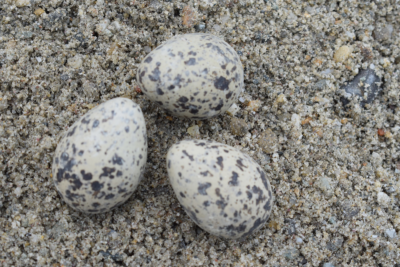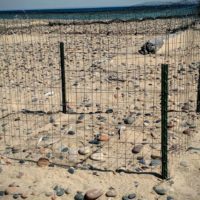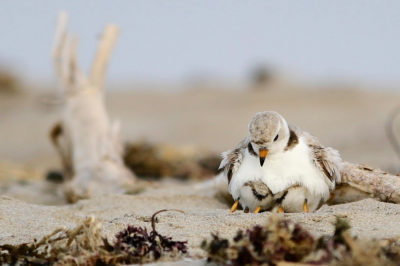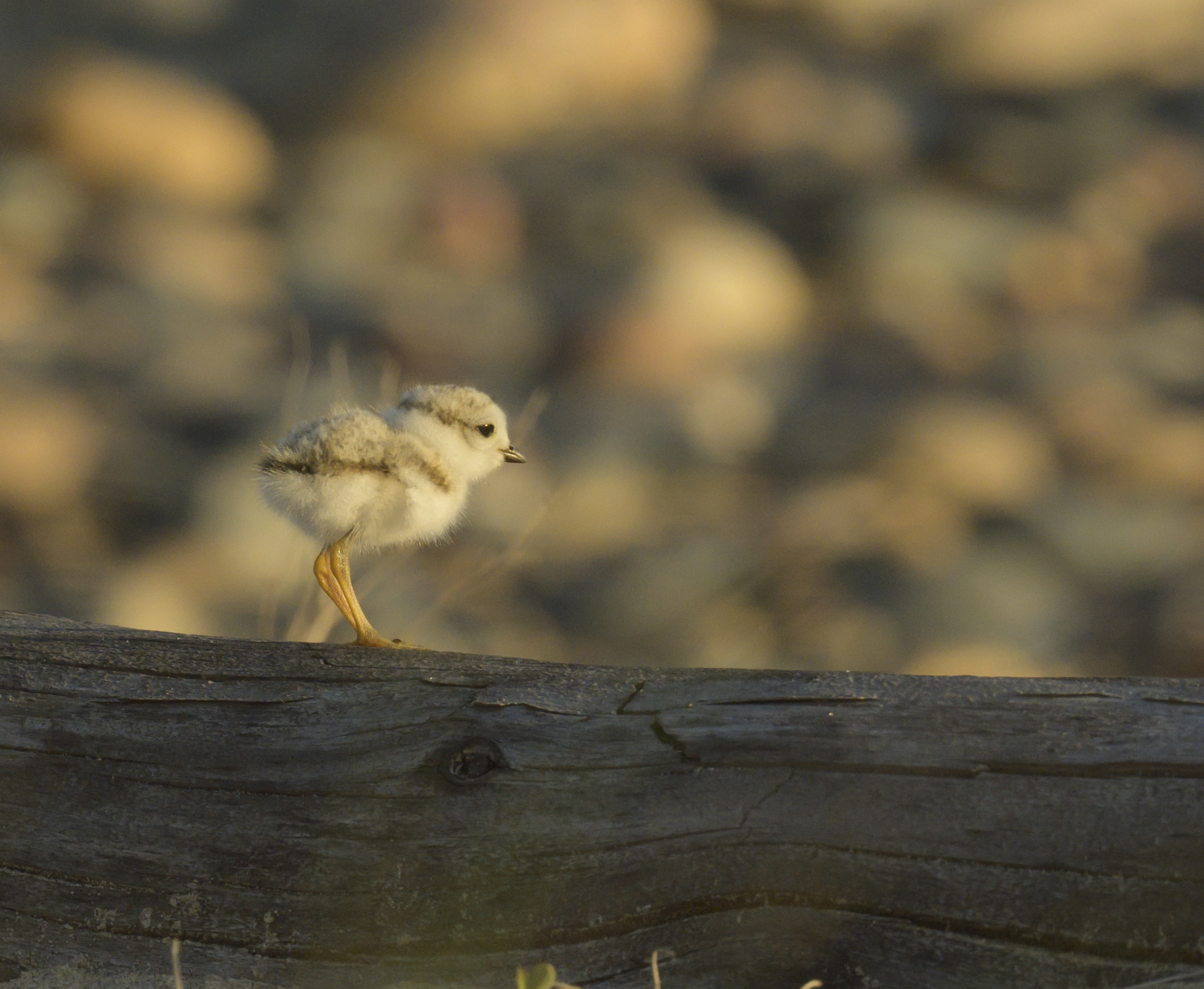Shorebirds are a fascinating group of birds that use both land and water, utilizing shorelines and beaches for nesting and bodies of water for food sources. With warming weather and sunny days upon us, now is the perfect time to think about shorebirds and how we can best share the beaches and shorelines with them.
Hidden Nests

Killdeer Eggs
During the breeding season, shorebirds lay their eggs on the ground in nests called scrapes, which are created by digging out a small portion of sand or rocks. The depth of the nest is just enough to keep the eggs in place, requiring some other nuances to provide additional protection. Shorebird eggs are speckled and teardrop-shaped. The speckling serves as camouflage and makes the eggs appear like rocks and shore debris in the area. The teardrop shape helps to prevent them from rolling away because the smaller tipped end keeps the egg rolling in a circular motion instead.

Piping Plover nest exclosure.
Due to the camouflaged nature of their eggs and the lack of a defined nest, it is possible to overlook, disturb, or even destroy their nest unintentionally. Some shorebird monitoring programs will place exclosures around nests to help make them less susceptible to harm, but most will not have this luxury. Beyond taking care of where you step while walking the beach, it is especially important to make sure that dogs are leashed and properly monitored when in such an environment — for the protection of the nest and the adult birds.
The Art of Misdirection
Many shorebirds practice the art of misdirection to help them protect their nests and their young. Killdeer make themselves look like easy prey through their broken wing display — walking away from their nest while dragging their wing behind them. It can be quite an effective tactic in distraction. Once the adult feels like the potential threat is far enough from their nest, they tuck their wing in and fly away. On occasion, humans have been tricked into calling a wildlife rehabilitator for help.

Piping Plover with chicks. © Kimberley Caruso
Piping Plover will move away from their real nest to another area of the beach and crouch down as if sitting on a nest to lure potential threats from their eggs and young. In another tactic, Piping Plover will hunch down on the ground and run in a zigzag pattern while making noise to mimic a mouse and lure the threat away from their nest.
These behaviors are fascinating to watch, just remember that these are signs that nests or young may be nearby and extra care should be taken.
As we begin to spend more time at beaches and along shorelines, it’s important to remember, we’re visitors in their homes. Follow the tips below to help care for the shorebirds that we love so much.
~ By Lindsay Cain
Michigan Audubon Education Coordinator
Tips for Sharing the Shore
- Watch for signs alerting you to nesting areas
- Walk around nesting areas
- Keep dogs on a leash at all times
- Fly kites well away from nesting areas
- Don’t use All-Terrain Vehicles for recreational use on shorelines
- Pick up litter and debris from the beach
- Share this information with others to help keep our shorebirds safe

